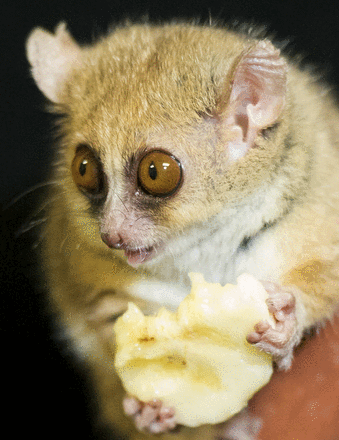Check out the July issue of GENETICS by looking at the highlights or the full table of contents!
ISSUE HIGHLIGHTS
The nucleoporin Nup2 contains a meiotic-autonomous region that promotes the dynamic chromosome events of meiosis, pp. 1319-1337
Daniel B. Chu, Tatiana Gromova, Trent A. C. Newman, and Sean M. Burgess
Chromosomes are organized in the nucleus to accommodate multiple functions. Chu et al. show a functional link between a nuclear pore complex protein, Nup2, and chromosome dynamics during meiosis. They identified a 125-amino acid chromosome-binding domain that is necessary and sufficient for Nup2’s meiotic function, thus behaving as a meiotic autonomous region (MAR). Synthetic genetic interactions with other meiosis-specific genes suggest that there are least two different levels of meiotic chromosome organization necessary to withstand this dynamic life cycle stage.
Neutral competition for Drosophila follicle and cyst stem cell niches requires vesicle trafficking genes, pp. 1417-1428
Matthew S. Cook, Coralie Cazin, Marc Amoyel, Shinya Yamamoto, Erika Bach, and Todd Nystul
Stem cell niche competition a common but poorly understood process. One impediment to understanding is a lack of useful niche competition alleles. In a forward genetic screen, Cook et al. discovered that mutations in vesicle trafficking genes reduce niche competition. In the ovary, alleles that cause mild defects in trafficking have a dramatic effect, suggesting that niche competition is very sensitive to impaired vesicle trafficking. Additionally, they identified several candidate niche competition alleles in other genes useful for future study.
Improving response in genomic selection with a population-based selection strategy: optimal population value selection, pp. 1675-1682
Matthew Goiffon, Aaron Kusmec, Lizhi Wang, Guiping Hu, and Patrick S. Schnable
Goiffon et al. introduce the optimal population value (OPV) as a new metric for genomic selection. OPV is based on the maximum possible haploid value in a population sub-set. Instead of evaluating the breeding merit of individuals, the proposed method evaluates the breeding merit of a set of individuals together. Simulation experiments using empirical maize data showed OPV outperformed other approaches. This suggests a new paradigm for selection methods in which an individual’s value is dependent upon complementarity with others.
Inferring the joint demographic history of multiple populations: beyond the diffusion approximation, pp. 1549-1567
Julien Jouganous, Will Long, Aaron P Ragsdale, and Simon Gravel
Patterns of genetic variation across populations are influenced by mutation, selection, genetic drift, and migrations. Building models of evolution helps understand how. This article proposes an approach to simulate allele frequency evolution in multiple populations when all these factors are involved. It is a discrete alternative to the classical diffusion approximation, and compares favorably in computational performance, yet is easier to generalize. Jouganous et al. use it to refine models of the Out-of-Africa event using 1000 Genomes Project data.
Pervasive behavioral effects of microRNA regulation in Drosophila, pp. 1535-1548
Joao Picao-Osorio, Ines Lago-Baldaia, Pedro Patraquim, and Claudio R. Alonso
Picao-Osorio et al. reveal pervasive effects of microRNA regulation on complex locomotor behaviors in Drosophila larvae: over 40% of microRNAs display behavioral phenotypes when mutated. This is the first time microRNA regulation has been implicated at this scale in behavior in animals. These findings enhance our understanding of the molecular basis of behavior and reveal novel and pervasive roles of microRNAs. The data suggests that microRNAs might play similar roles in other species, including humans.
Building ultra-high-density linkage maps based on efficient filtering of trustable markers, pp. 1285-1295
Yefim I. Ronin, David I. Mester, Dina G. Minkov, Eduard Akhunov, and Abraham B. Korol
This study concerns building high-density genetic maps in situations with intrachromosomal recombination rate heterogeneity and differences in genotyping errors and missing data. Ronin et al. propose an algorithm for detecting quality markers based on information hidden in the structure of the multidimensional marker space, including the sizes of groups of co-segregating (twin) markers. Using this information for pre-mapping filtering together with previously developed algorithms enables building high quality genetic maps with realistic map lengths and reliable marker order.
A neurotransmitter atlas of the Caenorhabditis elegans male nervous system reveals sexually dimorphic neurotransmitter usage, pp. 1251-1269
Esther Serrano-Saiz, Laura Pereira, Marie Gendrel, Ulkar Aghayeva, Abhishek Battacharya, Kelly Howell, L. Rene Garcia, and Oliver Hobert
In this study, Serrano-Saiz et al. map the neurotransmitter identity of neurons in the Caenorhabditis elegans male nervous system, thereby providing an entry point for future developmental and functional studies of sexual dimorphisms in the nervous system.
The RNAi inheritance machinery of Caenorhabditis elegans, pp. 1403-1416
George Spracklin, Brandon Fields, Gang Wan, Diveena Becker, Ashley Wallig, Aditi Shukla, and Scott Kennedy
dsRNA-mediated gene silencing is heritable in Caenorhabditis elegans, termed RNAi inheritance. Spracklin et al. describe the results of a forward genetic screen identifying factors required for RNAi inheritance. The screen identified six RNAi inheritance factors and that one of these factors, HRDE-2, promotes RNAi inheritance by facilitating small RNA binding to the Argonaute protein HRDE-1. All six RNAi inheritance factors are required for germline immortality, suggesting that transgenerational epigenetic inheritance systems promote germ cell health during normal growth and reproduction.













